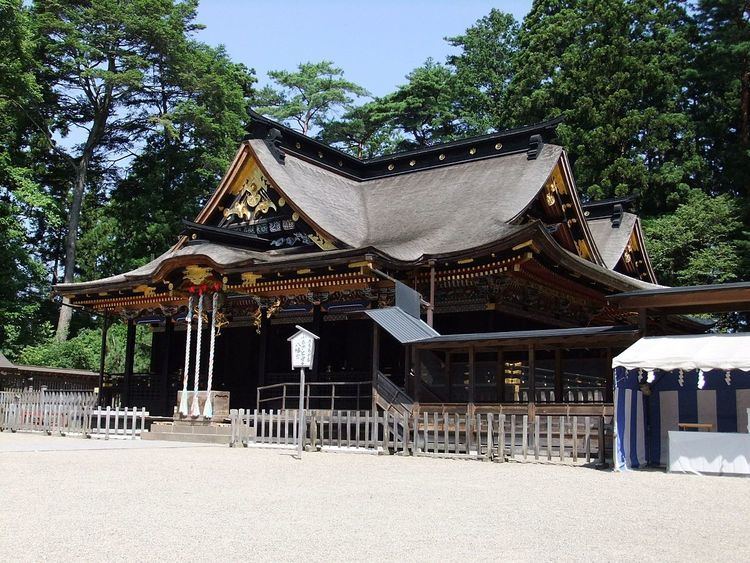Phone +81 22-234-3606 | Website www.okos.co.jp/oosaki/ | |
 | ||
Similar Zuihōden, Aoba Castle, Sendai City Museum, Akiu Great Falls, Takekoma Inari Shrine | ||
saki hachimang is a shinto shrine in aoba ku sendai miyagi japan the main shrine bui
Ōsaki Hachimangū (大崎八幡宮) is a Shinto shrine in Aoba-ku, Sendai, Miyagi, Japan. The main shrine building (社殿, shaden) has been designated a National Treasure of Japan.
Contents
- saki hachimang is a shinto shrine in aoba ku sendai miyagi japan the main shrine bui
- History
- Architecture
- References
History
The construction of the present shaden was ordered by the wealthy daimyo Date Masamune. He hired craftsmen from Kyoto and central Japan, some of whom had previously worked for the Toyotomi family. The shrine was erected between 1604 and 1607. The lavish decoration with wood carving, painting, metal fittings, and lacquer emulated recent models from central Japan, in particular, the Toyokuni shrine in Kyoto. Since the early Meiji period the shrine was called Ōsaki Hachiman Jinja. In consideration of historical circumstances, its original name was reinstated in June 1997. On November 22, 1952, the shaden was designated as a National Treasure.
Architecture
The shaden is one of the oldest extant examples of ishi-no-ma-zukuri (石の間造), also known as gongen-zukuri (権現造), and an outstanding work of Azuchi-Momoyama architecture. It is a single-storied structure consisting of a main sanctuary (honden) and a worship hall (haiden) which are joined via a connecting passage called ishi-no-ma. All three structures are under a single roof which is covered with thin shake shingles (kokerabuki 柿葺) made from Japanese cypress.
The honden is a 5 ken (間, bay) by 3 ken structure with a hip-and-gable, irimoya style roof to which a simple gabled roof of the 3 ken by 1 ken ishi-no-ma connects. The haiden is also 3 ken deep and 7 ken wide. Its roof is like that of the honden of the hip-and-gable type. On the front it has an attached triangular dormer with a decorative bargeboard of strongly concave shape, a chidori hafu (千鳥破風, lit. "plover gable"). The entrance is covered by a 5 ken wide step canopy with an undulating karahafu gable at eave ends (nokikarahafu).
